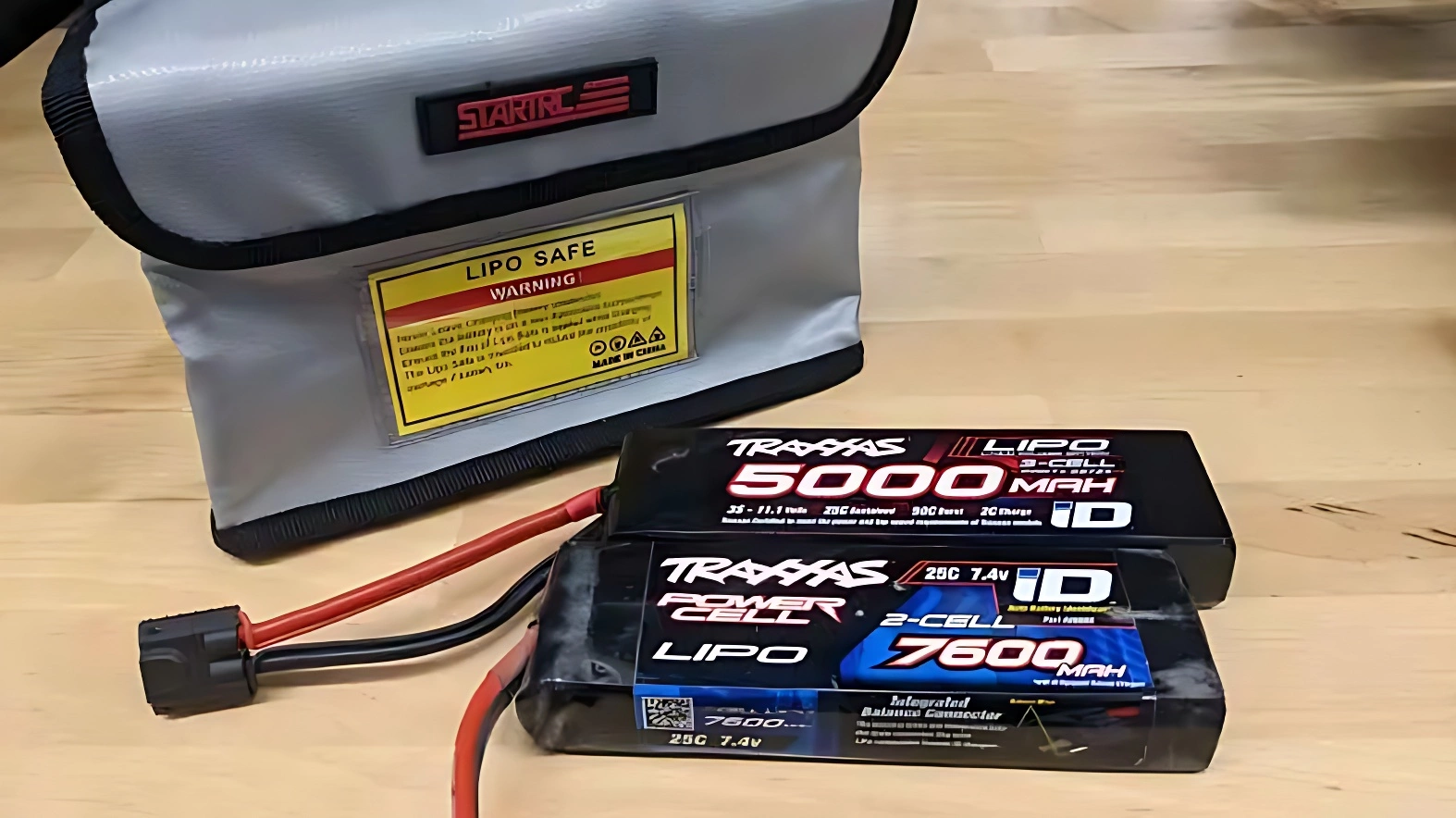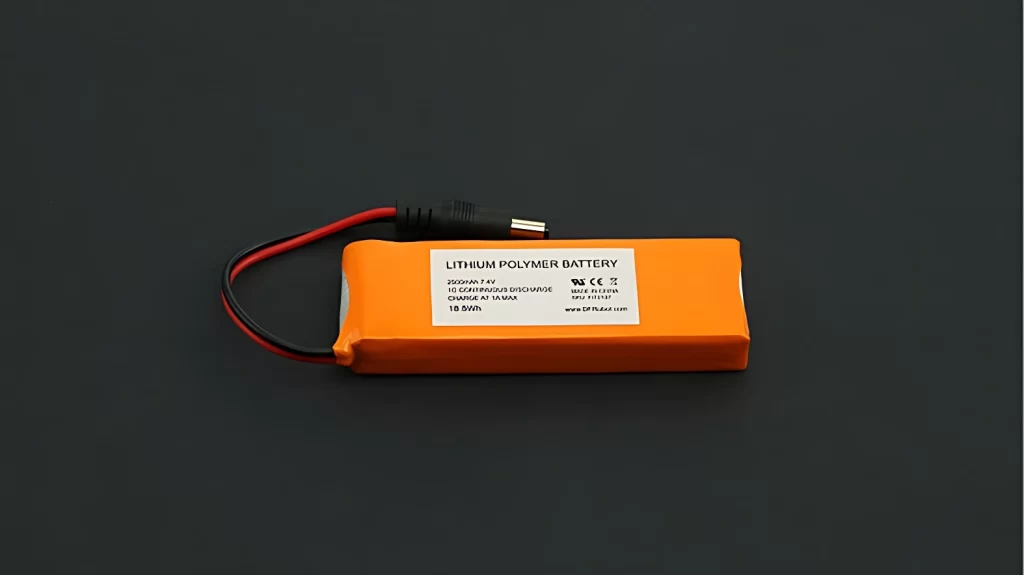Are you tired of waiting for your 7.4v Lipo battery to charge? Do you find yourself constantly checking the charger, wondering how much longer you have to wait?
Well, we have some good news for you! In this article, we will answer the burning question: how long does it take to charge a 7.4v Lipo battery?
The short answer is that it depends on the capacity of the battery and the charger you are using.
In general, it can take anywhere from 30 minutes to several hours to fully charge a 7.4v Lipo battery.
But don’t worry, we will provide you with a more detailed breakdown in the following paragraphs.
If you are looking for any suggestion for a 7.4v Lipo battery then our recommendation is Zeee 7.4V 2S 50C 5200mAh Lipo Battery.
How Long Does It Take To Charge A 7.4v Lipo Battery?
The time it takes to charge a 7.4V LiPo (Lithium Polymer) battery depends on the battery capacity (measured in milliamp-hours or mAh) and the charge rate (measured in amperes or A) of the charger.

To estimate the charging time, you can use the following formula:
Charging Time (in hours) = Battery Capacity (mAh) / (Charge Rate (A) x 1000)
For example, if you have a 7.4V LiPo battery with a 1500mAh capacity and a charger with a charge rate of 1A, the charging time will be:
Charging Time = 1500mAh / (1A x 1000) = 1.5 hours
It’s important to note that the charging time may vary depending on factors such as the battery’s age, temperature, and the efficiency of the charger.
Also, LiPo batteries require proper handling and charging techniques, so always use a dedicated LiPo charger and follow the manufacturer’s guidelines for safe charging.
Table of Charging Times for Common 7.4v LiPo Battery Sizes
If you’re an RC enthusiast or someone who uses electronic devices that rely on 7.4v LiPo batteries, it’s essential to know the charging times for these batteries.
The table below provides the charging times for common 7.4v LiPo battery sizes:
| Battery Size | Capacity (mAh) | Charging Time (Hours) |
|---|---|---|
| 2S 20C | 1000 | 0.5 |
| 2S 30C | 1000 | 0.3 |
| 2S 40C | 1000 | 0.2 |
| 2S 20C | 1500 | 0.75 |
| 2S 30C | 1500 | 0.45 |
| 2S 40C | 1500 | 0.3 |
| 2S 20C | 2200 | 1.1 |
| 2S 30C | 2200 | 0.66 |
| 2S 40C | 2200 | 0.44 |
The table provides charging times for three common capacities of 7.4v LiPo batteries, namely 1000mAh, 1500mAh, and 2200mAh. Each capacity is divided into three different discharge rates, namely 20C, 30C, and 40C.
As you can see from the table, the charging time decreases with an increase in the discharge rate.
For example, a 1000mAh battery with a discharge rate of 40C takes only 0.2 hours or 12 minutes to charge fully, whereas the same battery with a discharge rate of 20C takes 0.5 hours or 30 minutes to charge fully.
The Factors that Affect the Charging Time of the 7.4v Lipo Battery

Internal Resistance
The internal resistance of a LiPo battery can impact charging time. Higher resistance can cause a slower charging rate, while lower resistance allows for faster charging.
Charging Methods
The charging method used can influence charging time. Constant current/constant voltage (CC/CV) is the most common method, which provides a balance between charging speed and battery health.
Other methods, such as trickle charging or fast charging, can vary in charging time.
Battery Capacity
The capacity of the battery (measured in milliampere-hours or mAh) is directly related to the charging time.
Larger-capacity batteries will generally take longer to charge, while smaller-capacity batteries can charge more quickly.
Charger Specifications
The charger’s maximum output current and voltage play a crucial role in determining the charging time.
A charger with a higher output current can charge a battery faster, but exceeding the recommended charging rate can lead to battery damage.
Optimal Charging Rates
The optimal charging rate is typically specified by the battery manufacturer and is expressed as a fraction of the battery’s capacity (C-rate).
Following the recommended charging rate helps to prolong battery life and ensure safe charging.
The Balancing Act
Balancing the individual cells within a LiPo battery pack is essential for maintaining its health and performance.
This process can increase the overall charging time, as the charger must adjust the voltage and current for each cell to ensure they reach the same charge level.
Tips for Proper Charging and Storage of 7.4v Lipo Battery

Properly charging and storing your 7.4v Lipo battery can significantly extend its life and maintain its performance.
By following these tips, you’ll get the most out of your battery and protect your investment.
Charge Your 7.4v Lipo Battery Correctly
To extend the life of your 7.4v Lipo battery, always charge it according to the manufacturer’s instructions.
Use a quality charger specifically designed for Lipo batteries, as it will ensure the correct charging process.
Monitor the charging closely, and avoid overcharging or undercharging, which can damage the battery cells.
Store Your Lipo Battery Safely
Find a cool, dry place to store your 7.4v Lipo battery when not in use. Keep it away from direct sunlight, heat sources, or flammable materials.
Use a fireproof container or Lipo-safe bag for added protection.
This simple precautionary measure can prevent potential accidents and help maintain your battery’s performance.
Maintain the Right Storage Voltage
Never store your 7.4v Lipo battery fully charged or fully discharged. Aim for a storage voltage of around 3.8 volts per cell, which equates to roughly 50% capacity.
This optimal voltage ensures the longevity of your battery and prevents degradation over time.
Balance Your Battery Cells
Balancing your Lipo battery cells is crucial to maintaining their performance and lifespan.
Use a cell balancer or a charger with a built-in balancing function to keep the individual cell voltages consistent.
Periodically check the cell voltages and balance them if necessary, to prevent uneven wear or damage to the battery.
Inspect Your Battery Regularly
Regularly examine your 7.4v Lipo battery for signs of damage, such as swelling, punctures, or frayed wires.
If you spot any issues, stop using the battery immediately and seek professional advice.
It’s always better to err on the side of caution when dealing with potentially dangerous Lipo batteries.
Avoid Over-Discharging Your Battery
To prevent permanent damage to your 7.4v Lipo battery, avoid over-discharging it during use.
Set a low-voltage alarm or use a voltage-cutoff device to ensure that the battery never falls below the recommended minimum voltage.
This simple step will help extend the life of your battery and keep it running optimally.
FAQs
What Is The Proper Charging Current For My 7.4V LiPo Battery?
The optimal charging current for a LiPo battery is typically 1C, meaning the battery’s capacity is divided by 1,000.
For example, if you have a 1500mAh battery, the proper charging current would be 1.5A (1500mAh / 1000).
Can I Charge My 7.4V LiPo Battery Faster Using A Higher Current Charger?
While using a higher current charger may speed up the charging process, it is not recommended as it can reduce the lifespan of the battery and may even cause damage.
Always follow the manufacturer’s recommendations for charging current.
Can I Use My 7.4V LiPo Battery While It’s Charging?
No, it is not recommended to use the battery while it is charging, as it can cause damage to the battery and potentially the charger as well.
Always disconnect the battery from any device before charging.
What Is The Safe Temperature Range For Charging My 7.4V LiPo Battery?
The safe temperature range for charging LiPo batteries is typically between 32°F (0°C) and 104°F (40°C).
Charging outside of this temperature range can cause damage to the battery and may result in reduced performance or battery failure.
Final Words
The time it takes to charge a 7.4V LiPo battery will depend on several factors such as the capacity of the battery, the charging rate, and the charger’s specifications.
Typically, a 7.4V LiPo battery with a capacity of 1000mAh can take approximately one hour to charge using a charger with a 1C charging rate.
However, it’s crucial to ensure that the charger’s specifications match those of the battery to avoid overcharging, which can cause damage or even a fire hazard.
Always follow the manufacturer’s instructions for charging and handling LiPo batteries to ensure safe and efficient operation.